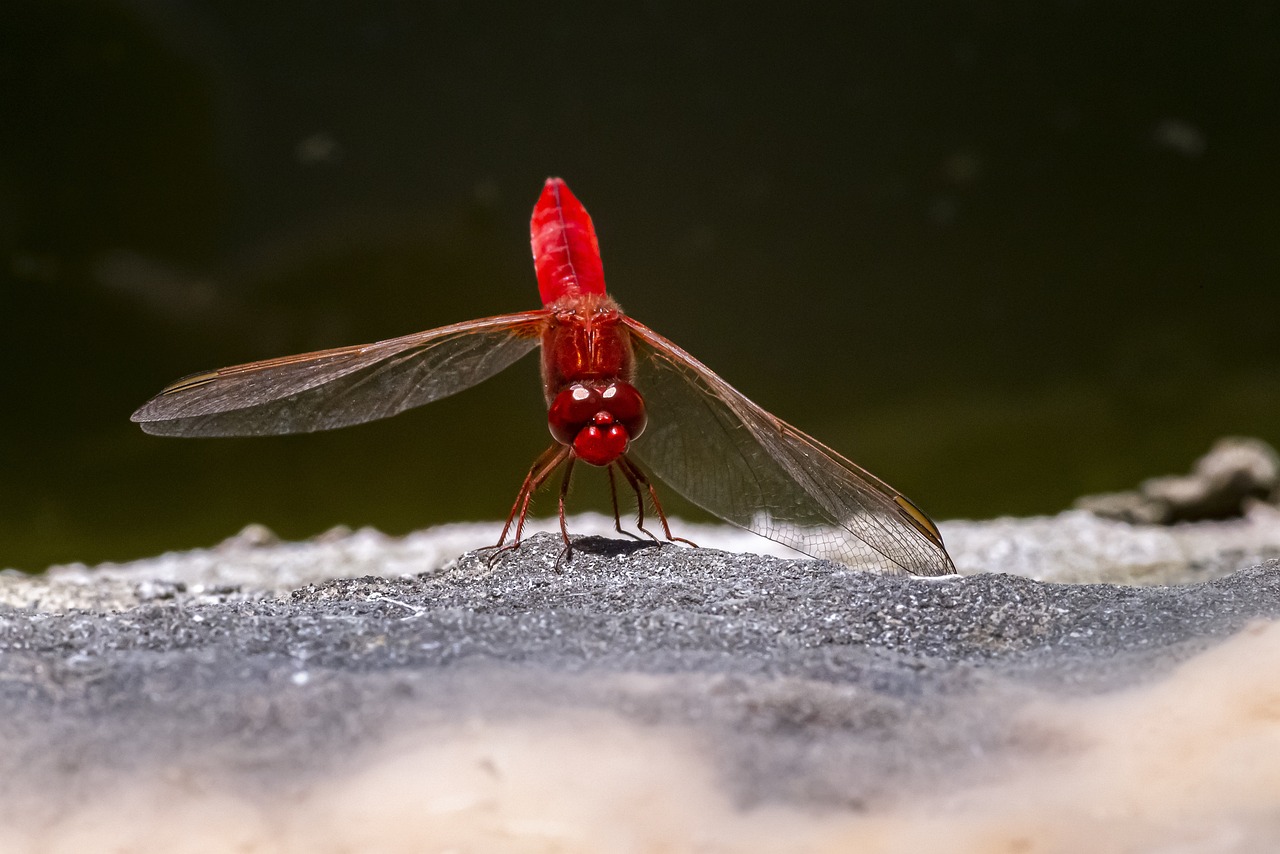The Scarlet Dragonfly (Crocothemis erythraea) is a striking species of dragonfly belonging to the family Libellulidae. Known for its vivid coloration, it is a common and widespread species found in various regions. Here are some detailed features and characteristics of the Scarlet Dragonfly:
Appearance
- Size: The Scarlet Dragonfly typically measures about 35-45 millimeters in length, with a wingspan of approximately 60-75 millimeters.
- Coloration:
- Males: Males are bright red with a distinctive scarlet body and red-veined wings. Their eyes are also red, which adds to their striking appearance.
- Females and Immatures: Females and immature males are yellow-brown with a pale stripe along the length of the abdomen. Their wings are clear with a slight yellow tint near the base.
- Eyes: Both sexes have large compound eyes that provide excellent vision, essential for hunting and avoiding predators.
Habitat
- Preferred Habitats: Scarlet Dragonflies are often found near still or slow-moving freshwater bodies such as ponds, lakes, marshes, and slow rivers. They prefer areas with abundant vegetation.
- Geographic Range: This species is widely distributed across Europe, Africa, and parts of Asia. They are also found in the Mediterranean region and can sometimes be seen in more temperate areas during the summer.
Behavior
- Hunting: They are active hunters, preying on various small insects such as mosquitoes, flies, and other small arthropods. They catch their prey mid-air using their legs.
- Perching: Scarlet Dragonflies are often seen perching on vegetation or floating objects near water bodies. They are known for their habit of basking in the sun with their wings spread flat.
- Territoriality: Males are territorial and often engage in aerial battles with other males to defend their chosen breeding sites.
Reproduction
- Mating: The mating process involves the male grasping the female by the neck with specialized claspers at the end of his abdomen. The pair forms a “mating wheel” position, which is characteristic of dragonflies.
- Egg-laying: Females lay their eggs by dipping the tip of their abdomen into the water while hovering above the surface. The eggs hatch into aquatic larvae (nymphs), which live in the water for several months to a few years before emerging as adults.
- Larval Stage: The larvae are predatory and feed on small aquatic organisms. They undergo several molts before metamorphosing into adult dragonflies.
Conservation Status
- The Scarlet Dragonfly is listed as Least Concern by the IUCN due to its wide distribution and stable population. It is a resilient species that can adapt to various aquatic environments.
Interesting Facts
- Color Change: The vivid red coloration of males develops as they mature. Young males initially resemble females in coloration before turning red as they age.
- Sunbathing: They are often seen basking in the sun to regulate their body temperature, which is crucial for their flight activity and hunting efficiency.
- Role in Ecosystem: As both predators and prey, Scarlet Dragonflies play an important role in the aquatic and terrestrial food chains. They help control mosquito populations and serve as food for birds, fish, and other predators.
Identifying Crocothemis erythraea
- Distinctive Features: The bright red coloration of adult males is a key identifier. Females and immature males can be recognized by their yellow-brown coloration and the pale stripe along the abdomen.
- Behavioral Traits: Observing their perching behavior and aerial hunting techniques can aid in identification.
In summary, the Scarlet Dragonfly (Crocothemis erythraea) is a visually striking and ecologically important species found near freshwater bodies across Europe, Africa, and parts of Asia. Its bright coloration, active hunting behavior, and role in the ecosystem make it a fascinating subject of study and observation.
Visited 873 times, 1 visit(s) today
Views: 1160
Subscribe to the newsletter:
